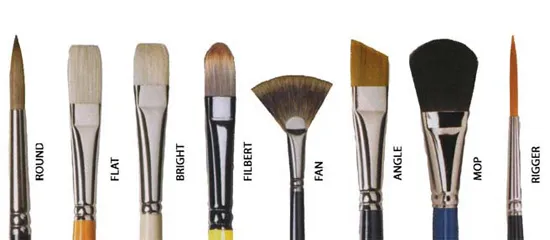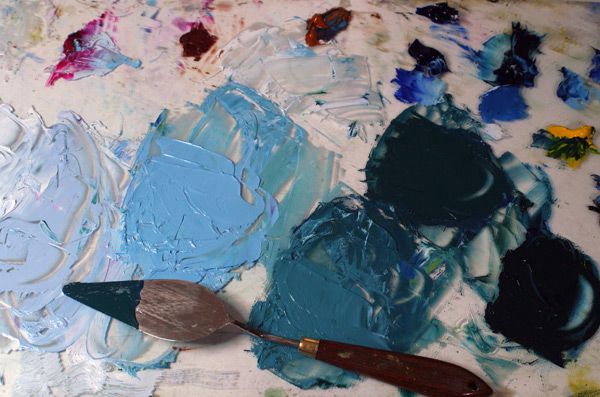Do you want to try a new hobby or artistic activity? Acrylic painting Tips is not only easy and affordable, but also used by professionals! Learn how to use acrylic paint effectively in this blog post about the benefits of acrylic paints.
Paints in the store usually come in three types: acrylics, watercolors, and oils. For beginners and intermediate painters, acrylic paints are a great place to start.
Acrylic Painting Tips

use professional grade paint
If you can afford it, use professional grade paint rather than craft paint. There are numerous brands available at various price points.
Professional grade paint contains more pigment, making it easier to blend and provide better coverage. Most major brands also sell good student-grade paints that are suitable for beginners.
Acrylic paint fades fast
This is great if you don’t want to wait days for a layer to dry, as you would with oil paint, but it can be a slight frustrating when blending.When working with acrylics, it is best to work quickly or use an extender crafted to slow the drying time.
If you happen to spill paint on your clothes, the quick drying time is also not ideal. To learn how to get acrylic paint out of clothes, how to remove acrylic paint from clothes. The answer is simple
If you’re really impatient, you can use a hair dryer on low heat to speed up the drying process.
Study colour mixing techniques.

Learning to mix your own colours and shades will help you save money and broaden your colour palette. You can learn to mix any colour from the three primary colours, red, blue, and yellow.
Avoid Overloading Your Brush
Having too much paint on your bristles will make it difficult to control the details in your painting and extend drying time. Additionally, it can make it more difficult to clean your brushes completely.
To achieve just the right look, you can always add more paint and layers. Make sure you only load your brush with as much paint as you need (unless you want a thick, textured painting).
Use a Variety of Brushes
For different shapes, brush strokes, and textures, mix flat, round, and bright brushes. The same brushes can also be used in different sizes to add variety and small details to your artwork.
Remove All of the Paint from Your Brushes
One of our most important tips is to thoroughly clean your brushes and avoid letting any acrylic paint dry in the bristles. Acrylics dry to a plasticky finish that is difficult to remove once dry. Keep the brushes you’re using in a cup of water while painting to make clean-up much easier. Just don’t leave them sitting for hours on end.
When you’re completed painting, always clean your brushes in water by dabbing them gently on the bottom of the cup. Then, using a paper towel, dry the brush, reshaping the bristles to their original shape and setting it aside to dry completely. When properly cared for, paint brushes can last a long time.
Take notes while painting for future use.
Make a note of how you mixed colours, what composition you liked, and where you got your reference photo or something you learned or noticed while painting. You can refer to these notes in subsequent painting sessions.
Don’t Be Afraid of Making Mistakes
It is not the end of the world if you make a mistake.The best way to fix an acrylic paint mistake is to simply let it dry and then paint over it. With that, you’re ready to continue.
Materials Required and the Top Acrylic Paint Brands
If you’re ready to explore acrylic painting, you’ll need a few things to get started. These acrylic art supplies are not difficult to come by:
Acrylic Paints
Begin with high quality paint. Using a low cost or children’s paint can result in thin, weak colours and cheap-looking finishes that may not last for many years. Student-grade paint designed for college-level artists is a good place to start, or you can choose higher quality artist-grade paint.
Acrylic paint is a popular medium for artists due to its versatility and ability to create a range of effects. When working with acrylics, choosing the right paint brush is crucial to achieve the desired results.
Acrylic paint brands that are popular include
- M. Graham
- Blick Studio
- Arteza
- Artist’s Loft
- Winsor & Newton Liquitex
A good paint will provide solid and smooth coverage while drying quickly. The final finish for several paint brands is more glossy, whereas others are more matte. So, be careful when mixing brands, or your painting will look different in some areas than others.
Paint Brushes

There are eight major brush types to use with acrylics, but you can get a lot done with lower numbers. We recommend purchasing the following five synthetic brushes: a Round 1, a Bright 6, a Filbert 8, and a Flat 12
Synthetic brushes with smooth whisker provide even coverage for your painting. Examine customer reviews and avoid brushes that lose shape quickly or have long, splayed bristles that are difficult to control. Brushes should also not shed while painting.
Canvas and Easel
Stretched canvas is simple to work with, cheap, and durable. Canvas board is simple to store and ideal for beginners. Make sure you have a sturdy easel for whatever painting surface you choose. An easel angles your painting, whether you’re sitting or standing, allowing you to paint comfortably.
Palettes
Paper palettes are ideal for colour mixing and easy cleanup. Because a reusable palette must be washed each time, you may end up with a lot of acrylic paint in your pipes! Paper tones are handy and simple to discard after use. A paper plate also works well.
Palette Knife

A palette knife is an adjustable blade designed especially for painting. Painters use it to mix and combine paint, scrape off excess, and achieve various techniques such as straight lines, fan shapes, and thick textures, making it a useful tool.
Water
Seeing as acrylics are water-based, keep a cup of water nearby to thin your paint or use when it’s time to wash your brushes.
Scrap Paper
Keep a scrap of paper aside for practising strokes or checking colours after mixing them.
Paper Towels
After rinsing your brush, use paper towels to dry it and remove any excess paint. To avoid getting paint on other surfaces, keep paper towels nearby to wipe any paint off your fingers or hand. Another suggestion? Try applying paint with a filter paper to get attractive textures and eye catchy.
Top Rated Painters in Gainesville
If you want to renovate or decorate your home with professionals, try their services. You will be amazed with their works. They are reasonable and trustworthy.
- Oconee Painting Gainesville
- Tim’s Ace Remodeling & Handy Services
- True Coat Painting
- KDO Kitchens & Remodelling
Read Also: Uncovering the Cultural Significance of Folk Art Painting in Different Countries







